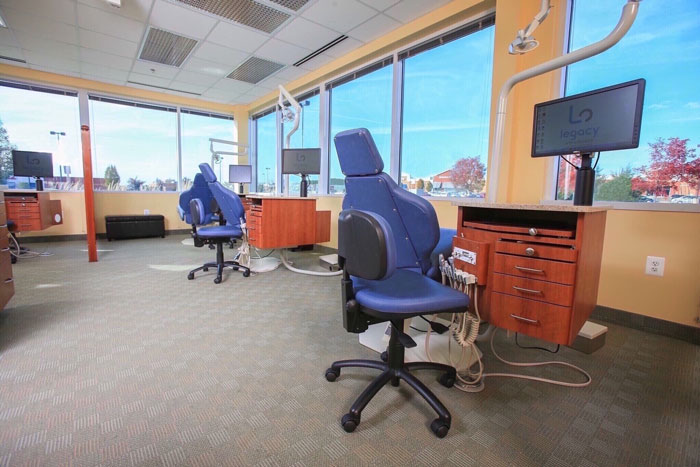Legacy Orthodontics for Dummies
Table of ContentsSome Ideas on Legacy Orthodontics You Need To KnowGetting My Legacy Orthodontics To WorkA Biased View of Legacy OrthodonticsNot known Incorrect Statements About Legacy Orthodontics A Biased View of Legacy Orthodontics
In addition, we offer adjustable therapy timetables, flexible payment alternatives and a fun, satisfying experience.An orthodontist is a dental expert trained to detect, protect against, and deal with teeth and jaw irregularities. They remedy existing conditions and are educated to recognize problems that may establish in the future. Orthodontists function with individuals of all ages, from kids to grownups. People frequently connect a best smile with good health.
Malocclusion, or misaligned teeth, can bring about dental concerns, consisting of tooth degeneration, periodontal illness, and difficult or excruciating eating. But not everyone is birthed with straight teeth. If you have a bad bite or huge spaces between your teeth, you might desire to get in touch with a dental practitioner concentrating on orthodontic treatment.
Some Known Details About Legacy Orthodontics
( Picture Debt: DigitalVision/Getty Images) Orthodontists utilize repaired and detachable oral gadgets, like braces, retainers, and bands, to change the setting of teeth in your mouth. Orthodontic therapy is for dental irregularities, including: Misaligned teethBite issues, like an overbite or an underbiteCrowded teeth or teeth that are as well far apartJaw misalignmentThe goal of orthodontic treatment is to improve your bite.
A healthy bite ensures you can eat, eat, and speak correctly. While you might think of orthodontists as mostly for kids or young adults that require dental braces, they can fix dental troubles at any type of age. Orthodontists attend college, oral institution, and orthodontic institution. After graduation, they invest 2 or 3 years in an orthodontic residency program.
, however not all dentists are orthodontists. They concentrate on 2 areas: Just how to appropriately and safely move teeth Just how to properly lead advancement in the teeth, jaw, and faceOnce an orthodontist has finished training, they have the choice to come to be board certified.
The Buzz on Legacy Orthodontics
Misalignment, or malocclusion, is one of the most typical reason people see an orthodontist. It is hereditary and is the outcome of dimension differences between the top and lower jaw or in between the jaw and teeth. Malocclusion results in tooth congestion, a twisted jaw, or uneven bite patterns. Malocclusion is usually treated with: Your orthodontist affixes metal, ceramic, or plastic square bonds to your teeth.
Some individuals require a headgear to aid move teeth right into line with pressure from outside the mouth. A retainer is a customized device that keeps your teeth in location.
They can develop additional room in the mouth without having to draw teeth. Orthodontists utilize cables, medical screws, or plates to support your jaw bone.
You might require to see an orthodontist if you have: Crowding or not adequate area for every one of your teethOverbite, when your upper teeth come over your bottom teethUnderbite, when your bottom teeth are too far forwardSpacing or problems with gapsCrossbite, which is when your top teeth fit behind your base teeth when your mouth is closedOpen bite or an upright void in between your front bottom and top teethMisplaced midline, when the center of your bottom and top teeth do not line up Dealing with a dental malocclusion can: Make attacking, eating, and speaking easierImprove the balance of our face and your total appearanceEase pain from temporomandibular joint conditionsDifferent your teeth and make them less complicated to cleanse, aiding protect against dental caries or dental caries It's commonly a dental expert that initially notifications misaligned teeth during a regular test.
About Legacy Orthodontics

During your initial orthodontic examination, you'll likely have: An oral examPhotos taken of your face and smileDental X-raysPanoramic (360 level) X-rays of your face and headImpressions to create molds of your teethThese tests will assist your orthodontist know exactly how to wage your treatment. leesburg clear braces. An orthodontist is a dental professional who's had training to treat your teeth and jaw
Orthodontists may do surgical procedure, exams,X-rays,and even more to help you acquire a much more comfy, healthier smile. An orthodontist is concentrated on your bite, so something like a broken tooth would certainly be dealt with by a dental professional. Orthodontists are dentists however not all dental professionals are orthodontists. Orthodontists are concentrated on your bite, or the way your teeth meshed, and the straightness of your teeth.
Ever before asked yourself how stars constantly seem to have flawlessly lined up teeth? Orthodontists are oral experts that concentrate on fixing irregularities in the teeth and jaws.
Some Known Factual Statements About Legacy Orthodontics

, orthodontists have a varied toolkit at their disposal. These tried-and-true braces make use of a system of braces adhered to the teeth and attached by cords.
Clear aligners, like Invisalign, are a preferred option for patients seeking a more discreet treatment option. These removable trays are custom-made to gradually move the teeth's position. Headgear might be used combined with braces or aligners to use additional targeted forces, particularly for dealing with jaw discrepancies. In cases of narrow jaws, palatal expanders can be utilized to create space for proper tooth placement.